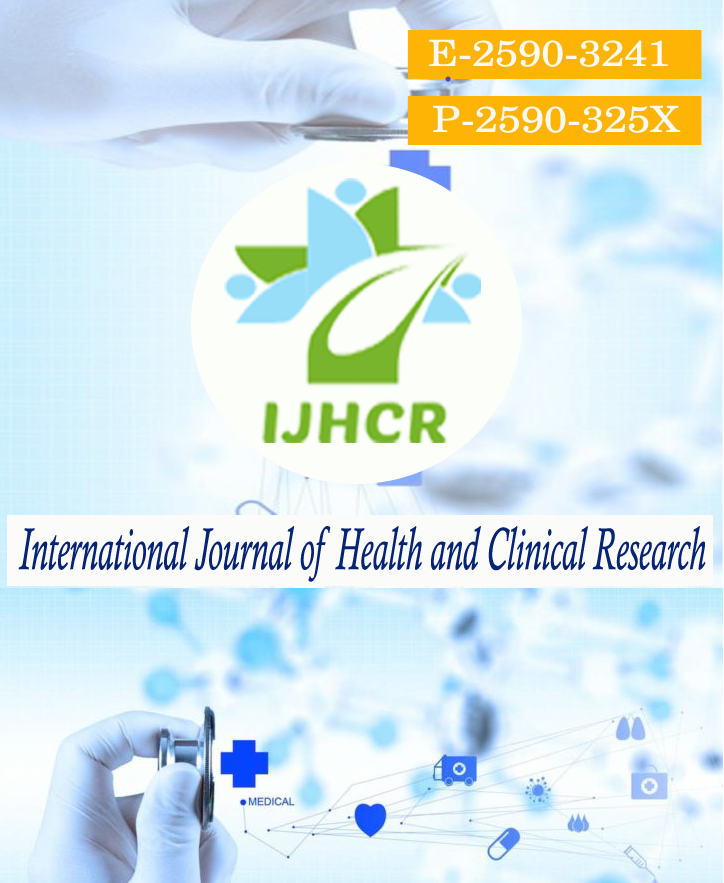Determine the Pattern of HRCT Findings in Active and Inactive Pulmonary Tuberculosis
Keywords:
Active Pulmonary Tuberculosis, sputum smears, High-resolution computed tomography (HRCT).Abstract
Background: Tuberculosis (TB) is a common and frequently fatal infectious disease caused by Mycobacterium strains. The delay in diagnosis
leads to a delay in isolation of the patient, which increases the risk of infection spreading and the severity of the disease, and this delay in diagnosis
is caused by a variety of factors, so we aim to determine the pattern of HRCT findings in active and inactive pulmonary tuberculosis.Material and
Methods- This was the prospective descriptive clinical study carried out on 50 patients suspicious of Pulmonary Tuberculosis who underwent
HRCT Thorax. Patients suspected with tuberculosis, new patients (on treatment) and AFB positive included in study.Results- Most patients were in
40 – 60 year age group with Males comprising 54%, Females 46%. The common complaints patients presented were Cough, Fever, Nightsweats.
Ill-defined nodules, consolidation, tree-in-bud look, and cavitation were the most frequent HRCT findings in Active disease. Traction
bronchiectasis, atelectasis, calcified granulomas, and peribronchial thickening were the most prevalent symptoms of Inactive disease.Conclusion –
HRCT chest results can assist distinguish higher-risk individuals from those with active pulmonary tuberculosis but negative sputum smears. HRCT
is a helpful diagnostic and treatment tool because it can distinguish between active and inactive disease.
Downloads
Published
How to Cite
Issue
Section
License
Copyright (c) 2021 Shaik Ameenulla Hafeezuddin, Pilli Srujana, Bangaru Bhavani, Vighnesh, Kanugula Kowshik, Manikonda Raghavender Reddy

This work is licensed under a Creative Commons Attribution 4.0 International License.






 All articles published in International Journal of Health and Clinical Research are licensed under a
All articles published in International Journal of Health and Clinical Research are licensed under a 